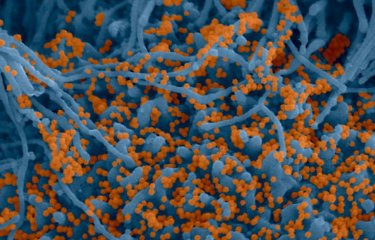-
News | 2024.05.29
Creation of a joint Institut Pasteur – Oncovita laboratory
Dedicated to the research of new immunotherapeutic vaccines in oncology and prophylactic vaccines, the aim of the joint Institut Pasteur - Oncovita laboratory is to design and develop vaccine candidates through to proof of concept in humans.
-
Document de presse | 2024.05.28
AFROSCREEN: a key network for genomic surveillance in Sub-Saharan Africa
Three years after its launch, AFROSCREEN meets all its objectives, developing effective genomic surveillance to tackle epidemics in sub-Saharan Africa The AFROSCREEN project, financed to the tune of €10 million by Agence Française de Développement (AFD), has been working since 2021 to set up or strengthen sequencing platforms and build an operational network for monitoring emerging...
-
News | 2024.05.30
Escherichia coli bacteria establish antibiotic resistance via a defense mechanism
A defense system has been discovered in Escherichia coli bacteria by Institut Pasteur scientists. In this system, the bacteria eliminate a small DNA molecule (the plasmid) known to carry antibiotic resistance genes, but not before the resistance genes have been integrated into the bacterial chromosome. In defending themselves, the bacteria establish antibiotic resistance. This discovery is a...
-
News | 2024.06.11
Strengthening Multisectoral and Regional Cooperation to Mitigate Vector-Borne Diseases in the Mediterranean
The interconnectedness of our world has brought about significant challenges in public health, particularly with the rise of infectious epidemics. Globalization, climate change, and rapid urbanization have created fertile ground for the emergence and spread of diseases, as starkly illustrated by the COVID-19 pandemic. Among these threats, vector-borne diseases transmitted by mosquitoes and ticks...
-
Document de presse | 2024.06.18
Olympics: how many days does it take for mosquitoes in Greater Paris to transmit arboviruses, and what preventive measures are needed?
The number of imported cases of dengue in the Greater Paris region increased significantly in the first few months of 2024. In the run-up to the Olympic Games, with huge numbers of international visitors set to come to Paris – especially from endemic dengue countries –, we need to be vigilant. Scientists from the Institut Pasteur, in collaboration with the Regional Mosquito Control Agency (ARD)...
-
News | 2024.06.25
Announcement of the future establishment of the Institut Pasteur du Japon
The Institut Pasteur (Headquarters: Paris, President: Prof. Yasmine Belkaid) is pleased to announce the upcoming establishment of the Institut Pasteur du Japon (IPJ).
-
News | 2024.06.27
Intermittent fasting: cellular cleansing to improve health?
Scientists have reproduced the mechanism of autophagy, stimulated by intermittent fasting. This process enables the breakdown of cellular waste, which has health benefits. But the process naturally becomes less effective as the body ages. Autophagy is a possible avenue for research to "cleanse" neurons of their aggregates of harmful proteins in diseases such as Alzheimer's or Parkinson's....
-
News | 2024.06.29
2024 Pride March: Institut Pasteur committed to diversity and inclusion
Paris, June 29, 2024 – The Institut Pasteur is marking a new milestone today by publicly proclaiming its support for diversity and inclusion. An impressive delegation of nearly 180 Institut Pasteur employees is proudly taking part in the Pride March in Paris, demonstrating a strong commitment to promoting LGBTQIA+ rights and equality for all.
-
News | 2024.07.02
Climate and health: anticipating tomorrow's vector-borne diseases in France
The impact of climate change on the emergence of diseases is well established. This is particularly true of diseases transmitted by blood-feeding insects, of which the tiger mosquito is now a well-known vector in mainland France. The Fondation Crédit Mutuel Alliance Fédérale is working alongside the Institut Pasteur to combat these diseases, as part of its commitment to the public interest and to...
-
News | 2024.07.04
How coronavirus HKU1 forces its way into cells
Scientists have pinpointed the precise binding sites for the virus HKU1 in respiratory cells, providing a detailed picture of the infection mechanism used by the virus. Their findings shed light on other animal species that may host the virus and pave the way for the development of infection-blocking antibodies.


